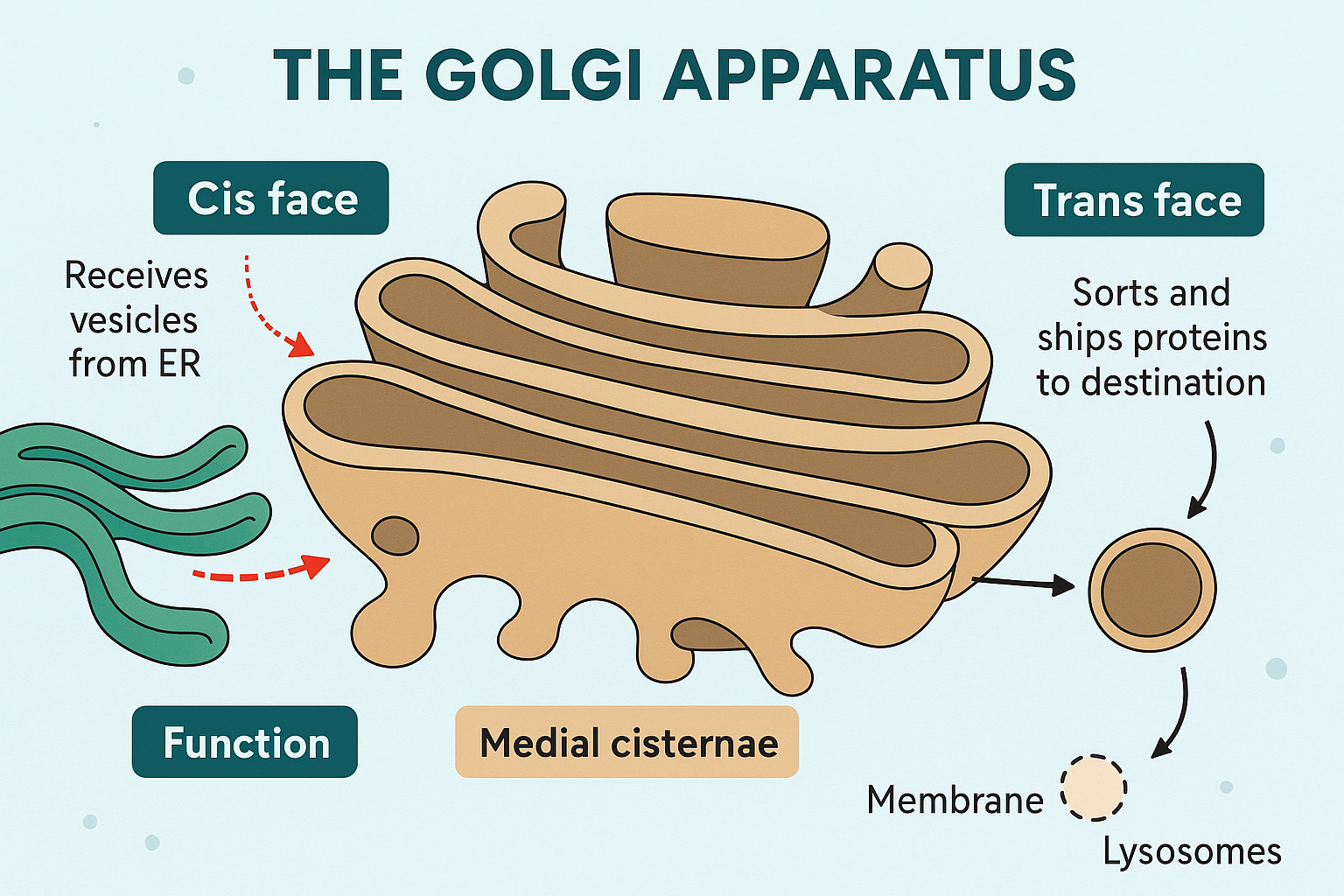The Golgi Apparatus: MCAT Breakdown of Structure & Function
You may know it as the “cell’s post office,” but the Golgi apparatus does much more than package proteins. On the MCAT, you’ll need to understand the structure, directionality, and key functions of the Golgi, especially how it interacts with the ER, vesicles, and membrane-bound systems.
🧬 Golgi Apparatus Structure and Faces
| Golgi Region | Function |
|---|---|
| Cis face | Receives vesicles from rough ER |
| Medial | Enzymatic modifications (e.g., glycosylation) |
| Trans face | Sorts and ships proteins to destination |
🧠 MCAT Tip: Transport is directional: ER → Cis Golgi → Trans Golgi → Cell surface or lysosome.
🔄 Golgi Functions You Must Know
Protein modification (glycosylation, phosphorylation)
Sorting proteins for delivery to correct cell compartments
Lipid and polysaccharide processing
Packaging digestive enzymes into lysosomes
🧠 Lysosomal enzymes like acid hydrolases are activated here → MCAT loves linking Golgi defects to lysosomal storage diseases.
🧪 Experimental Clues on the MCAT
✅ Example Passage:
“Inhibition of vesicle fusion at the trans-Golgi face…”
→ Protein buildup in Golgi → Failure to deliver to membrane or lysosomes
✅ Experimental Design:
“Cells expressing defective glycosylation enzymes accumulate misfolded proteins…”
→ Suggests Golgi processing failure → Protein degradation or disease phenotype
🔍 Golgi vs Rough ER (Quick Comparison)
| Feature | Rough ER | Golgi Apparatus |
|---|---|---|
| Function | Protein synthesis + folding | Protein modification + sorting |
| Ribosomes | Present | Absent |
| Location | Surrounds nucleus | Between ER and plasma membrane |
| MCAT Link | Translation & folding | Post-translational modifications |
🧠 Final MCAT Tips
Always track cis → trans direction in vesicle transport
Golgi defects = protein trafficking or enzymatic modification issues
Know experimental consequences of Golgi inhibition or dysfunction
Link Golgi to lysosomes, membrane receptors, and cell surface proteins
✅ Call-to-Action (CTA)
Visualize the inner workings of the cell like never before with KOTC’s diagram-based MCAT biology tools, quizzes, and memory tricks.
Frequently Asked Questions (FAQs)
-
Aim for 4-6 focused hours, ensuring you incorporate breaks to avoid burnout.
-
Practice mindfulness techniques, take practice exams under realistic conditions, and maintain a balanced lifestyle.
-
Set short-term goals, seek support from mentors, and reward yourself for small achievements.
-
Regular exercise improves focus, reduces stress, and enhances overall mental clarity.
-
KOTC offers personalized learning tools, gamification features, and adaptive question banks to help students stay on track without burnout.


